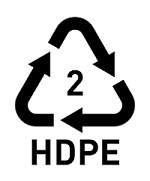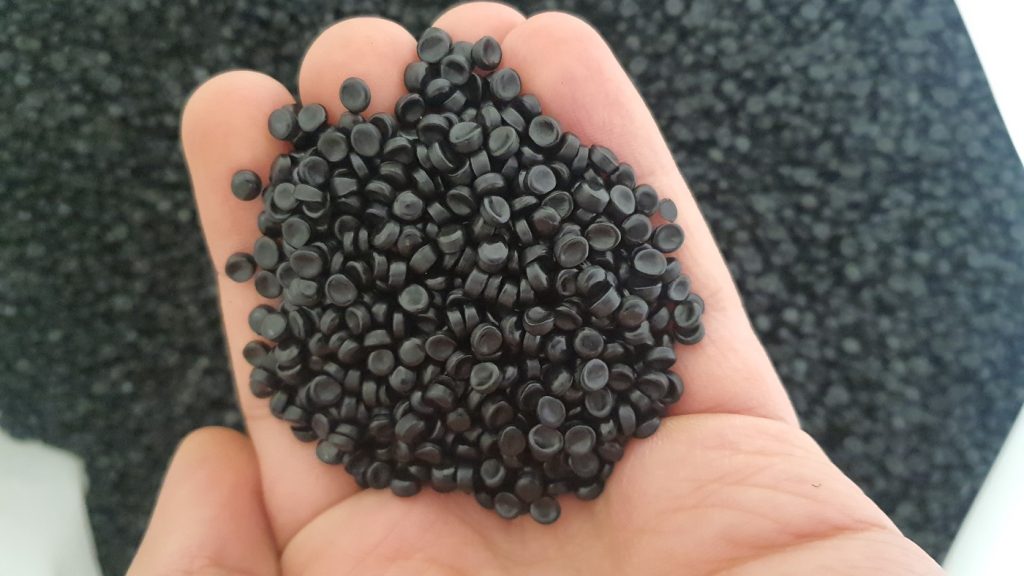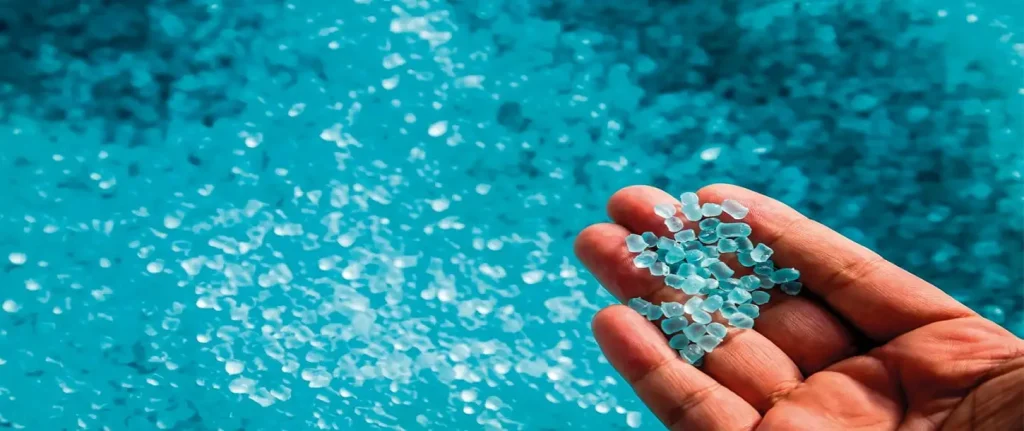HDPE
پلیاتیلن با چگالی بالا (HDPE) یا پلیاتیلن با چگالی بالا (PEHD) یک پلیاتیلن ترموپلاستیک است که از نفت ساخته میشود. برای لولهها گاهی اوقات “قلیایی” یا “پلیاتیلن” نامیده میشود. HDPE با چگالی بالا در تولید بطریهای پلاستیکی، لولههای مقاوم در برابر خوردگی، ژئوممبرانها و چوب پلاستیکی استفاده میشود. HDPE معمولا بازیافت میشود و شماره “2” را به عنوان کد شناسایی رزین دارد. در سال 2007، بازار جهانی HDPE به حجم بیش از 30 میلیون تن رسید.
خواص HDPE
HDPE دارای خواص مکانیکی، حرارتی و شیمیایی مناسبی است که آن را به یک ماده پلاستیکی متنوع و کارآمد تبدیل کردهاست. برخی از خواص HDPE عبارتند از :
- چگالی و وزن مولکولی بالا:
HDPE از چگالی و وزن مولکولی بالاتری نسبت به سایر انواع پلی اتیلن برخوردار است و به همین دلیل از استحکام و سختی بیشتری نیز برخوردار است. چگالی HDPE معمولا بین 0.94 تا 0.97 گرم بر سانتیمتر مکعب است و وزن مولکولی آن میتواند از چند هزار تا چند میلیون گرم بر مول متغیر باشد.
- گرمانرمی:
HDPE یک ماده گرمانرم است که میتوان آن را با روشهای مختلفی مانند تزریق، فشار، بادگیری، اکستروژن و جوشکاری شکل داد. دمای نرم شدن HDPE معمولا بین 120 تا 180 درجه سانتیگراد است.
- مقاومت در برابر ضربه:
HDPE یک ماده مقاوم در برابر ضربه است که میتواند بدون شکستگی یا ترک خوردن به شدت تغییر شکل دهد. این خاصیت باعث میشود که HDPE برای ساخت قطعاتی که در معرض ضربه و فشار هستند مناسب باشد.
- مقاومت در برابر خوردگی و رطوبت:
HDPE یک ماده مقاوم در برابر خوردگی، رطوبت، سایش، سوراخ شدن و رشد میکروبی است. این ماده همچنین دارای خواص عایقی برقی و حرارتی خوبی است و میتواند در دماهای مختلف کار کند.
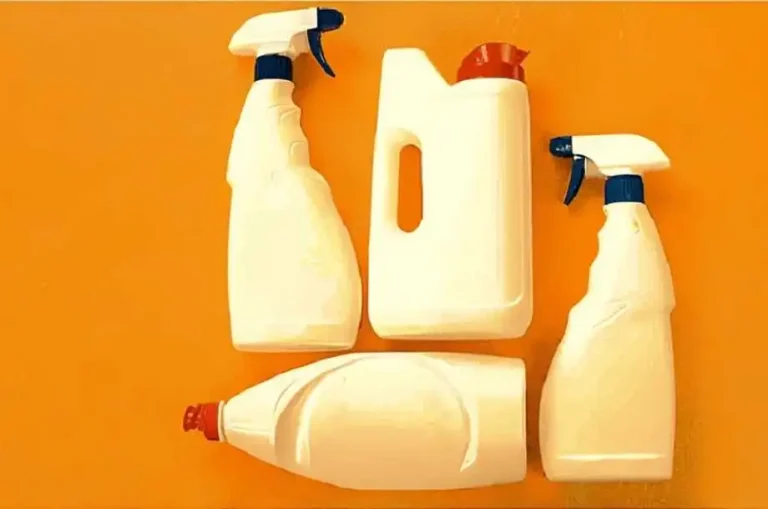
کاربردهای HDPE
HDPE یکی از محبوبترین و پرکاربردترین مواد پلاستیکی در جهان است که در بیش از 30 درصد از کل محصولات پلاستیکی استفاده میشود. برخی از کاربردهای HDPE عبارتند از:
- بطریهای پلاستیکی:
HDPE برای ساخت بطریهای پلاستیکی برای نگهداری مایعات مانند شیر، آب، آب میوه، شوینده، روغن و سموم استفاده میشود. HDPE برای این کاربرد مناسب است چون دارای مقاومت در برابر نفوذ، سبکی، قابلیت بازیافت و هزینه پایین است.
- لولههای مقاوم در برابر خوردگی:
HDPE برای ساخت لولههای مقاوم در برابر خوردگی برای انتقال آب، گاز، فاضلاب، مواد شیمیایی و مایعات دیگر استفاده میشود. HDPE برای این کاربرد مناسب است چون دارای مقاومت در برابر خوردگی، ضربه، فشار، دما و رشد میکروبی است. همچنین HDPE قابلیت جوشکاری و اتصال آسان را دارد.
- ژئوممبرانها:
HDPE برای ساخت ژئوممبرانها یا پوششهای پلاستیکی برای کنترل نفوذ آب، گاز، مواد شیمیایی و زباله به زمین استفاده میشود. HDPE برای این کاربرد مناسب است چون دارای مقاومت در برابر خوردگی، سایش، سوراخ شدن و تغییر شکل است. همچنین HDPE قابلیت انعطافپذیری و اتصال آسان را دارد.
- چوب پلاستیکی:
HDPE برای ساخت چوب پلاستیکی یا کامپوزیتهای پلاستیکی-چوبی برای ساخت مبلمان، کف، نرده، درب و پنجره استفاده میشود. HDPE برای این کاربرد مناسب است چون دارای مقاومت در برابر خوردگی، رطوبت، آفتاب، آتش و سایش است. همچنین HDPE قابلیت شکلپذیری و رنگپذیری را دارد.
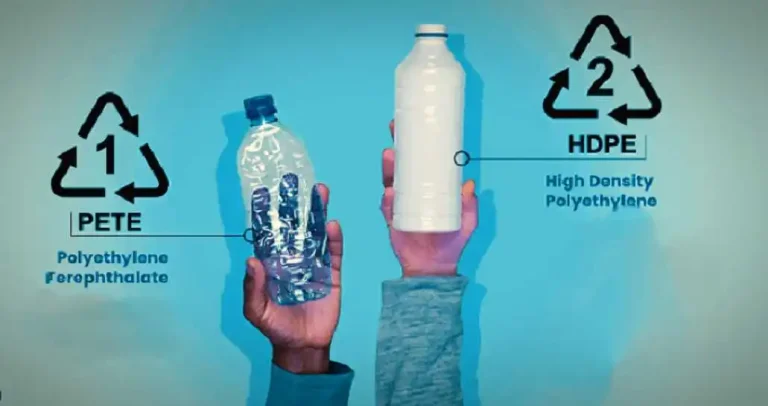
LDPE
پلیاتیلن با چگالی پایین (LDPE) یک پلیمر ترموپلاستیک است که از مونومر اتیلن ساخته میشود. این اولین درجه پلیاتیلن بود که در سال 1933 توسط شرکت صنایع شیمیایی امپریال (ICI) با استفاده از یک فرآیند فشار بالا از طریق پلیمریزاسیون رادیکال آزاد تولید شد. تولید آن امروز هم از همان روش استفاده میکند. سازمان حفاظت از محیط زیست (EPA) تخمین میزند که 5.7 درصد از LDPE (بازیافت #4) بازیافت میشود. علیرغم رقابت با پلیمرهای مدرنتر، LDPE همچنان یک درجه پلاستیک مهم باقی مانده است. در سال 2013، بازار جهانی LDPE به حدود 33 میلیارد دلار رسید. در حالی که انواع مختلفی از پلیاتیلن وجود دارد، دو نوع رایجتر آن پلیاتیلن با چگالی پایین (LDPE) و پلیاتیلن با چگالی بالا (HDPE) هستند. همانطور که PVC و CPVC در دنیای پلیمری با خویشاوندان خود بوسیده شدند، LDPE و HDPE خیلی چیزها را با هم مشترک دارند و تفاوتهای زیادی نیز وجود دارد.
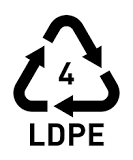
پلیاتیلن با چگالی پایین (LDPE) یک پلیمر ترموپلاستیک است که از مونومر اتیلن ساخته میشود. این اولین درجه پلیاتیلن بود که در سال 1933 توسط شرکت صنایع شیمیایی امپریال (ICI) با استفاده از یک فرآیند فشار بالا از طریق پلیمریزاسیون رادیکال آزاد تولید شد. تولید آن امروز هم از همان روش استفاده میکند.
خواص LDPE
پلی اتیلن با چگالی پایین دارای خواص ظاهری و مکانیکی مناسب و قابل توجهی است که در زیر به برخی از خواص مهم آن اشاره شده است:
- انعطافپذیری و کشسانی:
LDPE یک ماده انعطافپذیر و کشسان است که میتواند بدون شکستگی یا ترک خوردن کشیده و خم شود. این خاصیت LDPE را برای ساخت محصولاتی که نیاز به انعطافپذیری و الاستیسیته دارند، مانند فیلمها، کیسهها، لولهها و سیمها مناسب میکند.
- مقاومت در برابر مواد شیمیایی و رطوبت:
LDPE یک ماده مقاوم در برابر بیشتر مواد شیمیایی، رطوبت، اکسیداسیون و تابش UV است. این ماده همچنین دارای خواص عایقی برقی و حرارتی خوبی است و میتواند در دامنه وسیعی از دما کار کند.
- شفافیت و درخشندگی:
LDPE یک ماده شفاف و درخشان است که میتواند برای بستهبندی، پوشش، لمینیت و روکش محصولات مختلف، مانند غذا، پارچه، کاغذ و فلز استفاده شود. LDPE برای این کاربرد مناسب است چون دارای قابلیت بسته شدن و هزینه پایین است.
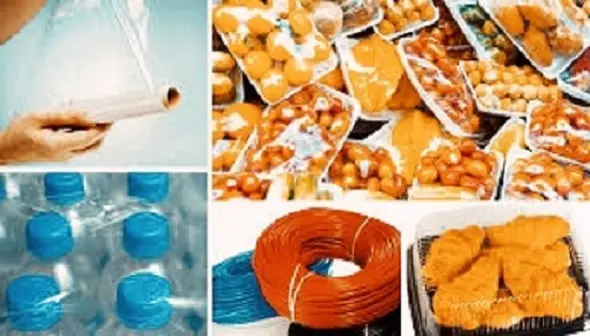
کاربرد های LDPE
این پلی اتیلن با توجه به خواص مناسب خود در بخش های مهمی از صنعت ساخت مواد پلاستیکی کاربرد دارد که برخی از مهم ترین آنها عبارتند از:
- فیلمهای پلاستیکی:
LDPE برای ساخت فیلمهای پلاستیکی برای بستهبندی، پوشش، لمینیت و روکش محصولات مختلف، مانند غذا، پارچه، کاغذ و فلز استفاده میشود. LDPE برای این کاربرد مناسب است چون دارای شفافیت، درخشندگی، قابلیت بسته شدن و هزینه پایین است.
- کیسههای پلاستیکی:
LDPE برای ساخت کیسههای پلاستیکی برای خرید، زباله، ذخیره و حمل و نقل اقلام مختلف، مانند مواد غذایی، لباس، کتاب و اسباببازی استفاده میشود. LDPE برای این کاربرد مناسب است چون دارای انعطافپذیری، دوام و قابلیت بازیافت است.
- لولههای پلاستیکی:
LDPE برای ساخت لولههای پلاستیکی برای انتقال مایعات، گازها و جامدات، مانند آب، هوا، روغن و شن استفاده میشود. LDPE برای این کاربرد مناسب است چون دارای مقاومت در برابر مواد شیمیایی، فشار و سایش است. LDPE همچنین قابلیت اکستروژن و جوشکاری آسان را دارد.
- سیمهای پلاستیکی:
LDPE برای ساخت سیمهای پلاستیکی برای کاربردهای الکتریکی و مخابراتی، مانند کابلها، کوردها و اتصالات استفاده میشود. LDPE برای این کاربرد مناسب است چون دارای مقاومت در برابر برق، حرارت و شعله است. LDPE همچنین قابلیت رنگپذیری و روکشپذیری آسان را دارد.
مقایسه پایانی
LDPE با پلیمریزاسیون رادیکال آزاد تولید میشود که شاخههای طولانیتر و کوتاهتری از هر نوع پلیاتیلن را شکل میدهد و چگالی آن را کاهش میدهد. شاخهزدایی باعث میشود که زنجیرههای مولکولی از فشرده شدن به شدت در شکل بلوری جلوگیری کنند، بنابراین LDPE مقاومت کششی کمتر اما انعطافپذیری بیشتری دارد. این فرمول برجسته LDPE را برای یک طیف گسترده از کاربردها از محصولات سخت مانند بطریهای پلاستیکی، سطلها و کاسهها تا فیلمهایی مانند کیسههای خرید پلاستیکی و بستهبندی پلاستیکی استفاده میکند. آیا صبحانه سریال میخورید؟ درب کارتن شیر و کیسههای پلاستیکی درون جعبه سریال احتمالا با LDPE ساخته شدهاند.
در طرف مقابل زنجیره پلیمری، ما HDPE را داریم که توسط شاخهزدایی حداقلی از زنجیره پلیمری مشخص میشود. شاخهزدایی کمتر به این معنی است که مولکولهای خطی در هنگام بلور شدن به شدت کنار هم فشرده میشوند، ساخت HDPE بسیار چسبنده و سخت میکند. این مقاومت کششی اضافی به این معنی است که HDPE PE انتخابی برای کاربردهایی است که نیاز به کمی بیشتر استخوان دارند، مانند قوطیهای شیر و مایع ظرفشویی، سطلهای زباله، لولههای آب و اسباببازیهای کودکان. این هم یکی از دلایلی است که HDPE به طور گستردهای مقوایی را به عنوان ماده لولهای انتخابی در ساخت آتشبازی جایگزین کرده است. لوله HDPE کمتر مستعد فروپاشی است اگر یک ماشین آتشنشانی کار میکند و وقتی که بوم درون لوله تمام میشود، لوله HDPE قابل بازیافت است.

